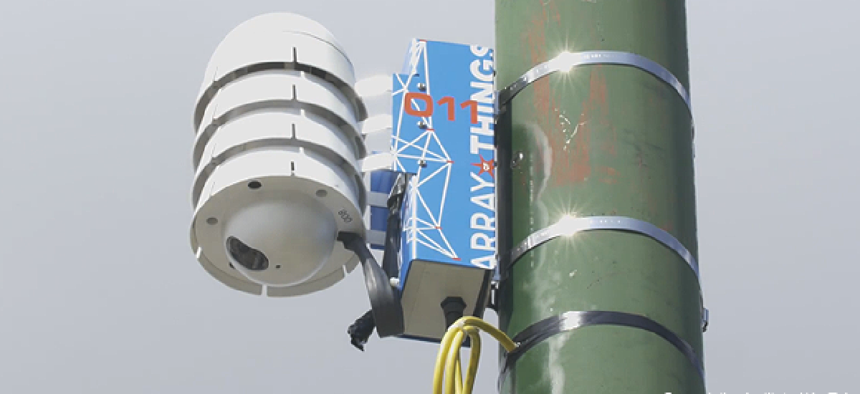Array of Things takes off in Chicago


Connecting state and local government leaders
The first sensors in Chicago’s Array of Things project have been installed; 50 are expected to be mounted by September.
Look! It’s a bird! … Or it’s a stack oversized of shuttlecocks, maybe?
No, those funky-looking contraptions being mounted on electric poles and traffic lights around Chicago are sensors, or, actually, housing for multiple sensors. They are the first sensors installed in Chicago’s much-anticipated Array of Things project. Fifty are expected to be up by September.
The first two sensors were placed at intersections where they will collect data on air and surface temperature, barometric pressure, light, vibration, carbon monoxide, nitrogen dioxide, sulfur dioxide, ozone, and ambient sound intensity. Two cameras will collect data on vehicle and foot traffic, standing water, sky color and cloud cover, according to the announcement.
The box that collects all of the data was developed by Argonne National Laboratory and is called Waggle.
“Waggle is a wireless sensor platform for marrying low-powered sensors and CPUs to sort of revolutionize how we do sensing in the environment,” Pete Beckman, co-director of the Northeastern/Argonne Institute for Science and Engineering, explained in an Array of Things promotional video.
The city expects to have 500 nodes around Chicago by the end of 2018.
The information will be used by researchers and policymakers to make decisions about road conditions and air quality. The data will be open and available to the public through the Chicago open data portal and a web portal at University of Chicago, a partner in the project.
The installation of these sensors comes less than a year since the project received $3.1 million in funding from the National Science Foundation. Since then, the city has held multiple public hearings and solicited public comment online to help in drawing up the project’s governing and privacy policies.
Chicago CIO Brenna Berman said the policy was important because of the kind of information being collected and the desire to have the public on board.
“Because the Array of Things will be collecting data from the public, we felt it was very important -- both in the technical design of the nodes themselves and in the design of the policies that will govern the project -- to be very mindful around the transparency, security and privacy approach that we were taking with the overall project,” she said.
To create the privacy policy the city looked at similar projects, like London’s closed circuit television system, but the fact that there isn’t another project like this made for some challenges. Although the sensors use cameras, the images will not be released to the public or saved long-term. Berman said less than 1 percent of photos will be collected and those will be used for calibration.
“There is nothing similar to this project,” she said. “There is nothing like this in the world, which has made it a challenge in and of itself.”





